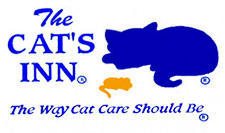Damage to your cat’s tongue, teeth, palate and gums can lead to many health risks. Color changes in your pet’s mouth can indicate dental and other medical issues. Your cat’s gums should be firm and pink, says WebMD’s pet section, not white, black or red, and should show no signs of swelling. The teeth should be clean and free of any brownish tartar and none should be loose or broken.
Things to Watch Out For
The following could indicate issues in your pet’s mouth:
- Dark, red line along the gums
- Red and swollen gums
- Ulcers on the gums or tongue
- Loose teeth
- Pus
If your pet has difficulty with chewing food, is excessively drooling or seems to be frequently pawing at their mouth area, they may have a dental issue that needs to be addressed.
 Common Mouth Disorders
Common Mouth Disorders
There are some common mouth disorders to watch out for when it comes to your feline friends. See a vet immediately if your cat suffers from any of the following symptoms of these common disorders.
Gingivitis
This inflammation of the gums may start as a dark red line bordering on the teeth. Mainly seen in older cats, if left untreated the gums may become sore and ulceration may occur.
Periodontitis
When gingivitis invades the tooth socket, the tooth can become loose and an abscess may form.
Stomatitis
If your cat has difficulty eating and the inside of his or her mouth appears red, this could indicate stomatitis, an inflammation of the mouth lining.
Mouth Ulcers
Feline respiratory and kidney disease could cause ulcers on your cat’s tongue and gums.
Solutions
Help avoid dental health issues by taking your pet for regular teeth cleanings. Plaque and bacteria build-up on your cat’s teeth can harden into tartar, causing gingivitis, receding gums and tooth loss. Regular teeth cleanings can prevent these and other issues.
To brush your cat’s teeth, use cotton swabs and a small toothbrush as well as a tube of toothpaste formulated for felines. You can also satisfy your cat’s desire to chomp and make his or her teeth strong with specially designed chew toys that can work like floss to help clean tartar and plaque buildup between your pet’s teeth, massaging the gums and scraping away food build up.
Orange Cats, Light-Colored Felines and Lentigo
Lentigo is a common condition in which black spots appear on the gums, lips, nose and eye margins of orange, silver and lightly colored cats, notes Cat World. This condition typically develops in cats less than one year old, with lesions potentially becoming more widespread as your pet ages. Cats vary in the number of lesions they have. Lentigo is benign, but you should report any changes to your cat’s skin to your vet to rule out melanoma or other medical conditions. Simply a cosmetic condition, lentigo is harmless and requires no treatment.
If your cat is recovering from a recent vet trip or you just want to pamper them with a comfy spot to lounge, check out our cat beds and pillows. These comfortable and washable options are sure to become a new favorite space for your cat to nap and relax. Check them out here, and contact us today for more information.

Leave a Reply